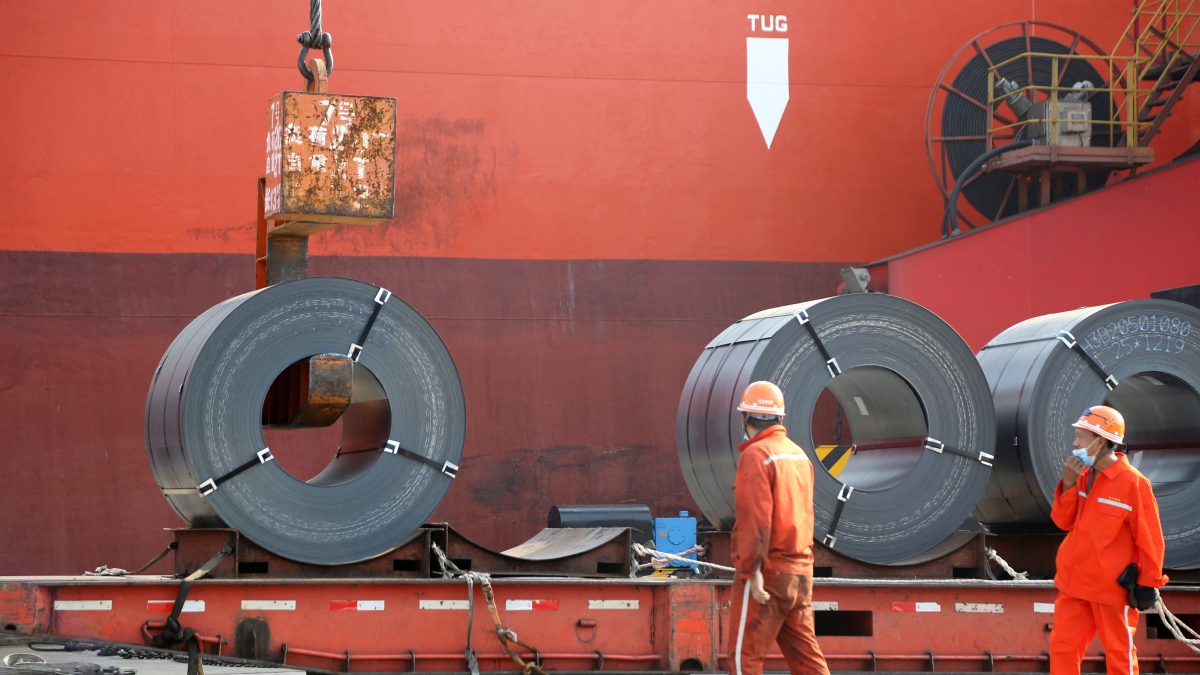Despite the steepest US tariffs in decades, China is on course for a record $1.2 trillion trade surplus as its exporters redirect goods to new markets unsettling governments worldwide
US President Donald Trump’s sweeping tariffs on Chinese goods were designed to undercut Beijing’s global trade dominance. Instead, these tariffs have helped China’s export sector. China has redirected its trade flows, flooding the world market with cheap exports, Bloomberg reported.
And, now China is set for a record $1.2 trillion trade surplus this year. According to Bloomberg, with direct access to the US curtailed, Chinese manufacturers have swiftly found new buyers. Chinese Exports also got a boost from the improvement in bilateral ties with India on the back of a flurry of visits by the leaders of the two countries. Exports to India surged to an all-time high in August.
Shipments to Africa are on pace for a record year and sales to Southeast Asia now exceed their pandemic-era peaks. This broad-based boom reflects rerouting of Chinese goods after Trump’s tariff moves.
But there is a catch!
Global alarm over Chinese trade gains
China’s record trade plus is unsettling for governments worldwide. Countries worry that a flood of low-priced goods could overwhelm domestic markets that have to follow laws of labour rights unlike China. Mexico has voiced strong opposition to this Chinese plot of diverting goods pricing them cheaper. It has retaliated with floating tariffs of up to 50 per cent on Chinese imports such as cars, auto parts and steel.
Elsewhere, tensions are simmering below the surface. India has received dozens of applications for investigations into dumping practices involving China and Vietnam. In Indonesia, officials promised closer scrutiny after public backlash over reports of ultra-cheap Chinese clothing entering local markets. Still, widespread retaliation remains unlikely, as nations engaged in difficult negotiations with the US are reluctant to add a simultaneous clash with China.
Strategic diplomacy and economic pressure
China has coupled its export strength with diplomatic manoeuvring, seeking to rally Brics partners against what it calls global protectionism, while at the same time warning countries such as Mexico against taking punitive measures. The stakes are high in the wake of Trump’s pressure on Nato allies to impose tariffs of up to 100 per cent on China over its ties to Russia.
For China, the risk is that a unified Western bloc could make its trade position far more precarious. As Bloomberg Economics notes, while China could quickly retaliate with reciprocal tariffs, such steps might alienate partners it needs during a period of domestic strain, including a prolonged property slump and an ageing population.
Export growth masks domestic weaknesses
China’s export boom is not translating into healthier bottom lines at home. Industrial profits fell 1.7 per cent in the first seven months of the year as manufacturers cut prices to offload excess production overseas. This discount-driven expansion has deepened China’s deflationary pressures, now on track for their longest stretch since the late 1970s.
The strategy also undermines China’s long-stated goal of rebalancing its economy toward domestic consumption. Foreign policymakers, including US Treasury officials, have pressed China to prioritise household demand. The latest export surge suggests external markets remain China’s lifeline, even if it prolongs structural vulnerabilities.
Then, there’s the currency factor
Currency dynamics have further supported Chinese exporters. A weaker yuan, alongside a softer dollar, has made Chinese goods more competitive across Europe and other global markets. The yuan’s real effective exchange rate is at its weakest level in more than a decade, magnifying China’s pricing power at a time of soft global demand.
Coupled with the sheer scale of its manufacturing sector, these advantages have made Chinese exporters resilient even in industries targeted by tariffs. Electric vehicle shipments, for instance, totalled more than $19 billion in the first seven months of the year, with Europe remaining the largest market despite EU duties.
The complex web of protectionism
For many governments, curbing Chinese exports has proven difficult. Even nations that have imposed barriers, such as Brazil and Vietnam, struggle to stem the tide of cheap goods. Analysts at Gavekal Dragonomics argue that Chinese firms can absorb tariff costs and exploit loopholes by rerouting shipments through third countries or shifting late-stage production.
This trade model gives China an edge over competitors supplying the same product. According to Absolute Strategy Research, nearly half of the goods once sold to the US could be redirected to Brics markets, ensuring steady demand even in the face of Western restrictions.
The paradox of China’s export surge is that while it strengthens Beijing’s geopolitical hand, it also highlights internal fragilities. Deflation, weak consumption and falling corporate profitability threaten to undermine long-term stability.
End of Article

)

